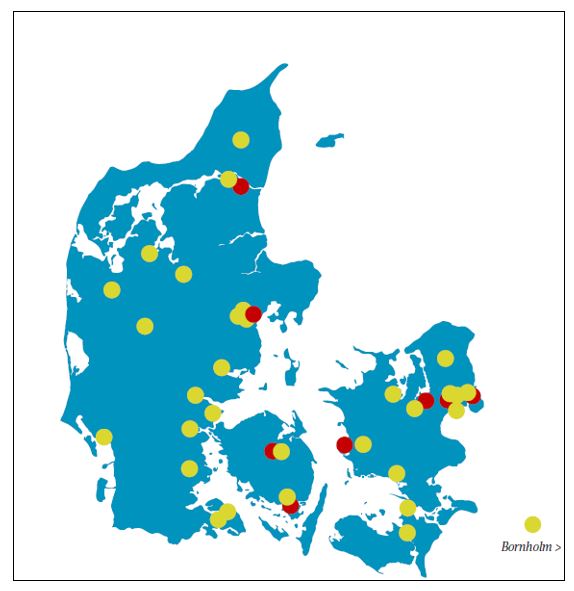The Editors have – together with the Scientific Committee – decided that new guideline papers will be presented in the Forum of NEUROPENEWS. In the December 2012 issue of the European Journal of Neurology the new guideline paper on the use of neuroimaging in the diagnosis of dementia on behalf of the EFNS Scientist Panel on Neuroimaging and -sonology is published, and we highlight this important article by offering you the abstract. We also asked the first author, Professor Filippi, for a short statement.
This article is also available for CME on the EFNS website for registered users.
Abstract:
Background and purpose: The European Federation of the Neurological Societies (EFNS) guidelines on the use of neuroimaging in the diagnosis and management of dementia are designed to revise and expand previous EFNS recommendations for the diagnosis and management of patients with Alzheimer’s disease (AD) and to provide an overview of the evidence for the use of neuroimaging techniques in non-AD dementias, as well as general recommendations that apply to all types of dementia in clinical practice.
Methods: The task force working group reviewed evidence from original research articles, meta-analysis and systematic reviews, published before April 2012. The evidence was classified, and consensus recommendations were given and graded according to the EFNS guidance regulations.
Results: Structural imaging, which should be performed at least once in the diagnostic work-up of patients with cognitive impairment, serves to exclude other potentially treatable, diseases; to recognize vascular lesions and to identify specific findings to help distinguish different forms of neurodegenerative types of dementia. Although typical cases of dementia may not benefit from routine functional imaging, these tools are recommended in those cases where diagnosis remains in doubt after clinical and structural imaging work-up and in particular clinical settings. Amyloid imaging is likely to find clinical utility in several fields, including the stratification of patients with mild cognitive impairment into those with and without underlying AD and the evaluation of atypical AD presentations.
Conclusions: A number of recommendations and good practice points are made to improve the diagnosis of AD and other dementias.
M. Filippi, F. Agosta, F. Barkhof, B. Dubois, N. C. Fox, G. B. Frisoni, C. R. Jack, P. Johannsen, B. L. Miller, P. J. Nestor, P. Scheltens, S. Sorbi, S. Teipel, P. M. Thompson and L.-O. Wahlund; European Journal of Neurology, Vol. 19, Issue 12, pages 1487-1501, December 2012
 Introduction by Massimo Filippi:
Introduction by Massimo Filippi:
The purpose of the Task Force was to revise and expand previous EFNS recommendations on the use of structural and functional neuroimaging for the diagnosis and management of patients with Alzheimer’s disease, and to provide an overview of the evidence for the use of these techniques in vascular dementia and other neurodegenerative dementias, as well as providing general recommendations that apply to all types of dementia in clinical practice. Furthermore, in these guidelines, special attention has been given to clarifying the current status and potential future clinical role of positron emission tomography with new ligands and also the use of non-conventional (advanced) magnetic resonance techniques in these disorders. The evidence for these guidelines has been identified from searches of MEDLINE and references from relevant articles published in peer-reviewed journals before April 2012. Other published meta-analysis, systematic reviews, and evidence-based management guidelines in dementia have also been considered, including the practice parameters from the American Academy of Neurology, the previous recommendations for the diagnosis and management of AD and other disorders associated with dementia from the EFNS, and the National Institute for Health and Clinical Excellence guideline. Consensus recommendations are given and graded according to the EFNS guidance regulations.
The most important recommendation is to perform structural imaging at least once in the diagnostic work up of patients with cognitive impairment in order: to exclude other potentially treatable diseases; to recognize vascular lesions; and to identify specific findings to help distinguish different forms of neurodegenerative types of dementia. Although typical cases of dementia may not benefit from routine functional imaging, these tools are recommended in those cases where diagnosis remains in doubt after clinical and structural imaging work up and in particular clinical settings. Amyloid imaging is likely to find clinical utility in several fields, including the stratification of patients with mild cognitive impairment into those with and without underlying AD and the evaluation of atypical AD presentations. Finally, consensus was reached on the fact that, at present, advanced MRI techniques do not have a role in the diagnosis or routine assessment or monitoring of neurodegenerative dementia.
Massimo Filippi is Professor of Neurology at the Neuroimaging Research Unit, Institute of Experimental Neurology, Division of Neuroscience, San Raffaele Scientific Institute, Vita-Salute San Raffaele University, Milan, Italy and Chair of the EFNS Scientist Panel on Neuroimaging and -sonology and of the Task Force, which developed the above guideline paper.






